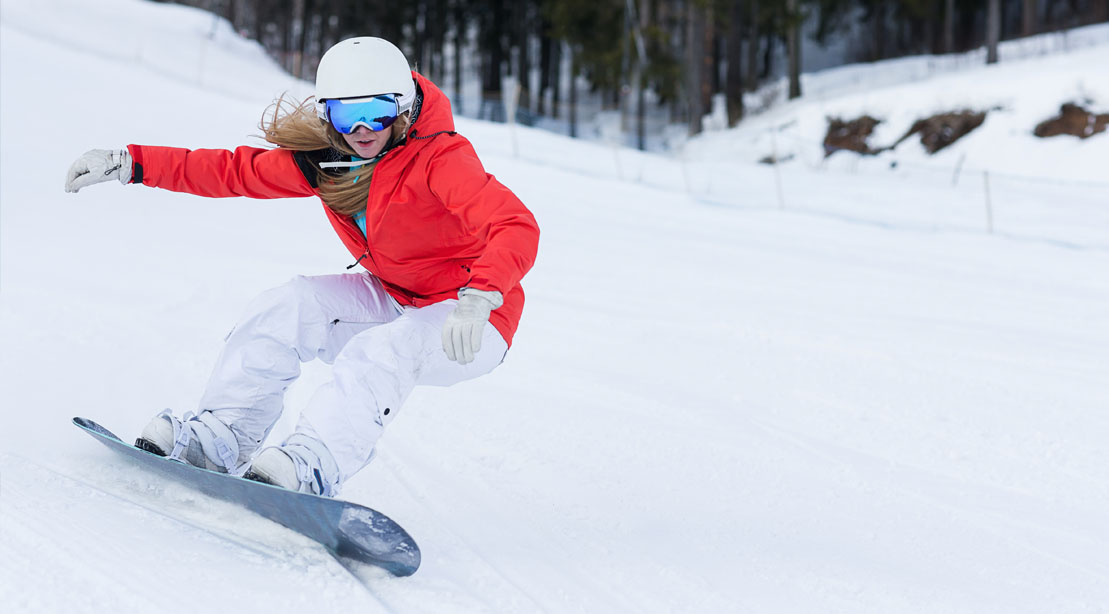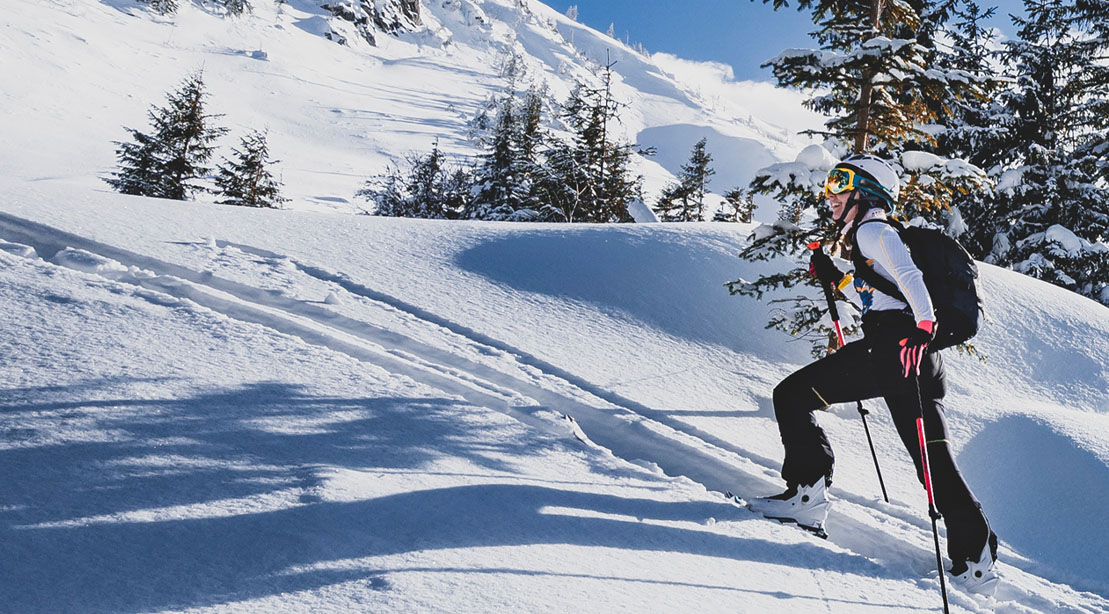It may be cold and snowy outside, but there's no better time to get into backcountry winter sports - especially if you want to stay in top shape during the cold months.
Snowboarding, snowshoeing, and cross-country skiing (among other winter sports) are not only fantastic ways to stay physically active during the colder months, but they also allow you to explore beautiful, snow-covered areas of the country that you might not have visited otherwise.
If you've never practiced winter sports, you may feel intimidated by the names alone. Finally, there's the gear and gear you're unfamiliar with, and getting out in the snow may not be your thing.
Before the pandemic, however, backcountry was the fastest growing segment in the snow sports industry, and with good reason. They provide a powerful full-body workout during months when you may be less active, and help ward off the symptoms of SAD, a seasonal depression that many struggle with as the days get shorter and activity levels dip.
Here Kelly Jensen, Manager of The Alpineer in Crested Butte (part of the Christy Sports brand) gives us a closer look at the benefits of winter sports and the impact they are having on the bodies and minds of the many participants.
 Dmitry Molchanov
Dmitry Molchanov
How to get involved in winter sports
You might think that you have to be in peak condition to try your hand at winter sports, but that couldn't be further from the truth. However, they could get you in the best shape of your life.
"You don't have to be in top shape to get into backcountry skiing or riding," says Jensen. And luckily, there are accessible ways to get into the sport for every fitness level.
Jensen recommends setting realistic goals, starting to exercise, and even finding a mentor who has experience in the sport you're trying out. And don't forget to start slow, says Jensen. jensen
Apply the same measures you did when you first hit the gym: go slow, take your time, warm up, cool down, and listen to your body.
The benefits of backcountry winter sports
- The body: The physical benefits should be obvious. You'll get plenty of exercise, and in the winter when most of us stay indoors a bit more than we like, this can be a great added bonus. “The great thing about backcountry winter sports is that you can ride fast or slow, heavy or light, stay close to home or go far; all with a fantastic workout that's also quite engaging,” says Jensen. Much better than being cooped up indoors all winter.
Many snow sports give you a full body workout and may engage muscle groups you haven't had in a while (even if you're an avid athlete); perfect for building strength and blasting through winter plateaus.
- The mind: The mental effects of backcountry sports, on the other hand, shine in Jensen's opinion. "It's an exercise for the mind as much as it is for the body," explains Jensen.
Traveling through avalanche terrain requires preparation and focus, which means you're constantly learning and seeing new scenarios in backcountry sports. t to mention being outside looking at the beautiful scenery and breathing in the fresh, crisp air.
“Navigation, snow research, group dynamics, gear preparation and weather monitoring are all big mental challenges,” says Jensen.
On a more holistic level, "backcountry skiing is very rejuvenating," says Jensen. "It mentally reshuffles the cards."
You know how good you feel after a workout, so imagine it's the middle of winter, you go outside, you workout surrounded by nature; This is where mental health gets a much-needed boost! Goodbye, SAD!
 Vadim Zakharchev
Vadim Zakharchev
How to prepare your body for winter sports
"There are many ways to physically prepare for backcountry sports, so don't get too bogged down in one," says Jensen. If you don't have access to a gym (like Jensen), "pick a home program and start researching one of the myriad of bodyweight leg blaster workouts." He says, focusing on exercise moves like air squats, jumping lunges, and squats jumps
"Feel free to add a weight vest if these moves feel too easy," says Jensen.
Winter sports like skiing and snowboarding are very leg and core centered sports. "Focus on strength training there," adds Jensen. "Balance is also a key element when sliding around on snow and cannot be neglected."
To strengthen these areas, “add in a bosu ball with lunges, squats, and single-leg balance exercises. "This will help with proprioception and general motor skills," he says.
"Balance is often overlooked, but it's crucial because it can drastically decrease your reaction times to changing snow or light conditions and potentially reduce the likelihood of injury," explains Jensen.
So here we have an excellent workout shared by MTNtatical.com. to help strengthen your body for backcountry winter sports.
Important safety tips to keep in mind
"The first port of call when you're just getting into backcountry sport is avalanche safety," recommends Jensen. Before you do anything, take an avalanche course, this cannot be overemphasized.
"Even if you don't plan on venturing into avalanche terrain for a long time, you have to know how to spot them so you don't accidentally find yourself in or under it," he says.
For others who don't want to venture into the backcountry but have their gear, "Check to see if your local ski slope has an ascent policy," says Jensen. "A ski resort can be a great way to learn some climbing techniques and figure out your gear in a safe and fun environment," he explains.
It's especially valuable if you're primarily looking for the practice component of backcountry skiing and driving.
This means that winter doesn't have to be a time to slow down, unless you want it to be. Stay in shape (or get in shape) with backcountry snow sports. You might find a new hobby that can improve your mental health and fitness level.
 zedspider
zedspider
The backcountry winter sports workout
If you're planning to hit the slopes, snowy trails, or ice for the first time, this workout will help move your muscles in the right directions. Mimicking some movements of backcountry winter sports.
Leg Blaster Winter Sports Workout:
- 20x air squats
- 20x lunges in place (10x per leg)
- 20x jumping lunges (10x per leg)
- 10x squat jumps
"Mini Leg Blaster"
- 10x air squats
- 10x lunges (5x per leg)
- 10x jumping lunges (5x per leg)
- 5x squat jumps

